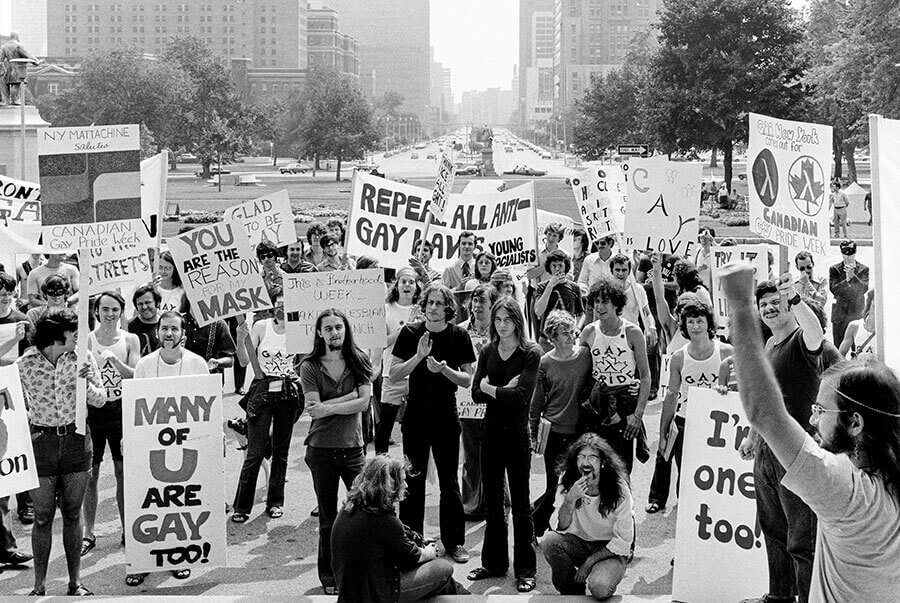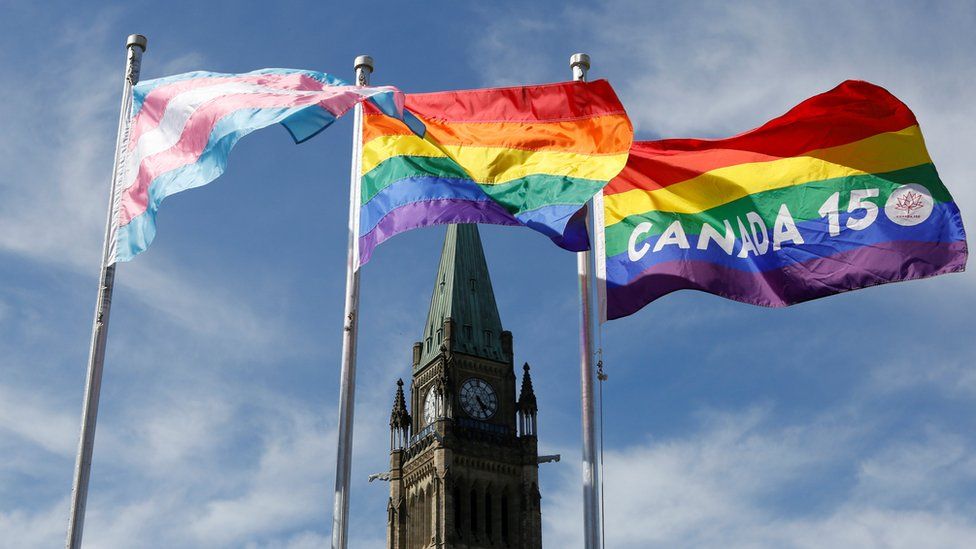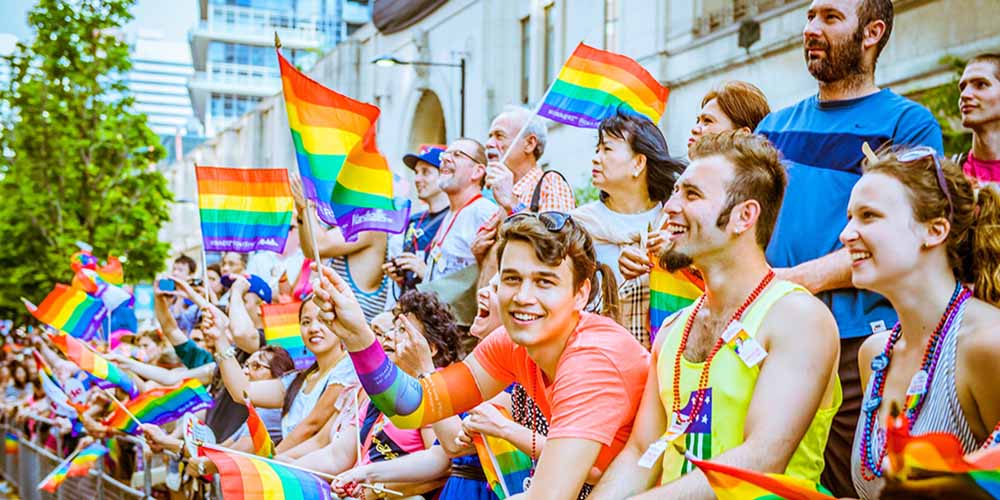Canada is one of countries supporting well to LGBT community. The Canadian government promulgates laws and rights specifically for this community. So, what do you know about LQBT Rights in this nation?
LGBT History In Canada
Cross-dressing behaviors and transgender people have been noted and documented in Canada for centuries. In the British North American era, having sex with another man of the same sex was a capital offense. However, no evidence of any killings has survived since political leaders were reluctant to carry out the law. The death penalty was subsequently abolished, although, in the late 19th century, more general legislation involving gross immorality between men was frequently implemented. The legal system frequently depicted homosexual males as sex offenders in the early to mid-20th century, as seen in the Everett George Klippert case, for example. He was sentenced to life in jail after admitting to having sex with several other guys. Following the introduction of legislation in 1967, same-sex sexual activity between consenting adults was swiftly decriminalized in 1969. At the time, Justice Minister and Attorney General of Canada Pierre Trudeau said, “There’s no place for the state in the bedrooms of the nation.” Trudeau later became Canada’s 15th Prime Minister.
Homosexuality was viewed as a psychiatric disease up until 1973. Numerous procedures, including lobotomies, conversion therapies, electroshock therapy, and others, were used to cure people of their gay orientation. According to a 1973 ruling by the American Psychiatric Association, homosexuality is not a mental disorder. As a result, the Diagnostic Statistical Manual (DSM), the diagnostic reference manual used by all health and social services professionals in North America, removed homosexuality from its list of diagnoses. It is unethical to treat homosexuality as a psychological issue, sexual deviance, or a type of psychopathology, the American Psychological Association stated in its code of ethics in 1999.

When the federal Civil Marriage Act was passed in 2005, Canada became the first country outside of Europe and the fourth country in the world to legalize same-sex marriage nationwide. Same-sex marriage has already been made legal in Ontario since 2003 in eight out of ten provinces and one out of three territories. Similar to that, different laws were used to legalize same-sex adoption throughout all provinces and territories. All provinces and territories, as well as the federal government, currently forbid discrimination based on sexual orientation and gender identity or expression in employment, housing, and public and private accommodations. In all provinces and territories, transgender people may now change their legal gender with certain restrictions.
LGBT Rights In Canada
The most comprehensive LGBT rights in the Americas and the globe are found in Canada. On June 27, 1969, the Criminal Law Amendment Act, 1968–69 (also known as Bill C–150) was enacted into law in Canada, legalizing same-sex relations. The Supreme Court of Canada held that sexual orientation is constitutionally protected under the equality section of the Canadian Charter of Rights and Freedoms in a landmark decision in 1995, Egan v. Canada. Canada became the first nation in the Americas and the fourth country overall to allow same-sex marriage in 2005.
When Canada topped the Gay Travel Index chart in 2021 and was listed as one of Forbes magazine’s top five safest countries in 2019, it was hailed as the world’s most gay-friendly nation. Asher & Lyric’s LGBTQ+ Danger Index placed it top (meaning least dangerous) in 2022. The main cities in the nation each have their own gay neighborhoods and communities, including the Church and Wellesley neighborhood in Toronto, the Gay Village shopping district in Montreal, the Davie Village in Vancouver, and the Bank Street Gay Village in Ottawa. Every summer, prominent politicians from the federal, provincial, and local scenes join the LGBT community in Canada to celebrate gay pride in all of the country’s main cities.

Canada has had some significant legal changes in favor of LGBT rights in recent decades (e.g., decriminalization, anti-discrimination, anti-harassment, gay marriage, homoparentality, blood donations, transgender rights, and outlawing of conversion therapies). According to the 2020 Pew Research, the social acceptability of homosexuality has increased from 80% in 2013 to 92% among Canadians between the ages of 18 and 29. Similarly, surveys conducted in June 2013 revealed a shift in public opinion in Canada, with a large majority of citizens endorsing same-sex unions, which became legal across the country in 2005. The polls also showed that 76% of Canadians felt that same-sex couples are equally likely to raise their children effectively as heterosexual couples and that 70% of Canadians believe that same-sex couples should be allowed to adopt children. In a survey conducted by the Privy Council Office, 91.8% of respondents stated they would be “comfortable” if their next-door neighbor was gay, lesbian, or bisexual, and 87.6% said the same about a neighbor who identified as transgender.
Some of rules can be mentioned as Equality rights, Legality of same-sex sexual activity, Same-sex marriage, Adoption, Discrimination and harassment protections, Intersex right, etc.
Do you know 7 Best LGBTQ Bars In Amsterdam
Pride Toronto
The annual Pride Toronto festival takes place in June in Toronto, Ontario, Canada. One of the most organized gay pride events in the world, it is a celebration of the variety of the LGBT community in the Greater Toronto Area and includes a Pride Parade, a major Dyke March, a Trans March, and several licensed establishments. The city’s Church and Wellesley village serve as the festival’s focal point, and the parade and marches mostly follow the neighboring Yonge Street, Gerrard Street, and Bloor Street. The 2014 celebration, which was substantially larger than typical Toronto Prides, served as the fourth worldwide WorldPride.

A nonprofit organization called Pride Toronto is in charge of planning the event. The work of 22 festival teams, each of which is in charge of a different part of the festival, is supported by a rising complement of fourteen staff members. There used to be two or three volunteer team leads for each team, but in 2019 it was decided to reduce that to just one lead per team in favor of a staff-centered strategy. The twelve volunteers on the board of directors will be responsible for providing the organization’s long-term strategic direction and management of the festival. There are six people on the board as of March 2020.
For the majority of its existence, Pride was a seven- to a ten-day celebration that took place during the last week of June. Depending on the particular year, the parade would take place either on the last weekend in June or the first weekend in July. Since 2016, June has been designated as Pride Month, with a calendar of activities taking place all throughout the month to prepare for the parade.
The organization’s in-person Pride celebrations for 2020 and 2021, including the Trans March, the Dyke March, and the Pride parade, were postponed due to the COVID-19 pandemic’s effects in Canada. Online “parades” and virtual Pride Month celebrations were held in both years.
Interesting Facts About Canada’s LGBT Community
- About one million LGBTQ2+ individuals reside in Canada, making up 4% of all adults in that age group as of 2018.
- Nearly one-third of LGBTQ2+ people in Canada are under the age of 25.
- During the epidemic, LGBTQ2+ Canadians could be more economically vulnerable.
- The first Pride parade in Toronto began as a protest.
- The first official Pride march and celebration in Canada are held in Montreal and Vancouver.
- The original pride flag had eight colours.
